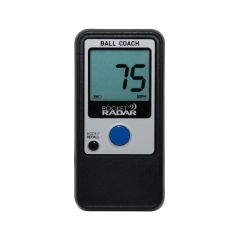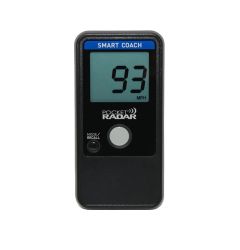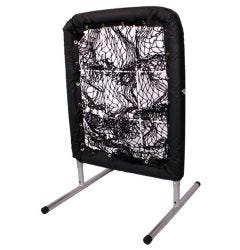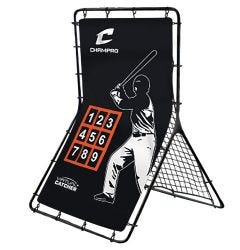Pitching Arm Care Guide

When you step onto the baseball field, the weight of the game lies not just on your shoulders but also in your arm. As a pitcher, your performance hinges especially heavily on the health of your pitching arm. Every pitch, from a subtle curveball to a swift fastball, demands intricate involvement from your arm muscles. Therefore, it's crucial that you prioritize arm care, ensuring that your pitching arm remains in its best form.
This guide will walk you through the various techniques of pitching arm care, focusing on exercises, stretches, and post-pitching routines that will help you keep your arm healthy, strong, and injury-free.
In this article, we’ll cover:
Before we dive in, you might also want to check out our comprehensive selection of pitching training aids. They provide valuable support in maintaining your arm’s strength and flexibility, thus helping to enhance your performance.
Before you set foot on the mound, it’s imperative to warm up your pitching arm. A proper warm-up routine prepares your muscles for the task ahead, reducing the risk of injuries. This process aids in improving blood circulation and oxygenating the muscles, thereby enhancing their performance.
Remember, an effective warm-up should increase your heart rate gradually, enabling your body to transition from a state of rest to one of activity. It’s important to focus on dynamic stretches – these are active movements that get your blood pumping and your body ready for the game.
Here are some exercises and stretches to include in your pitching arm warm-up routine:
- Arm Circles: Extend your arms out to the sides and perform small circles in the air, gradually increasing their size. This helps to loosen up the shoulder joints.
- Tricep Stretches: Extend one arm overhead, bend it at the elbow, and use your opposite hand to gently pull the elbow towards the center. This aids in stretching the tricep muscles.
- Shoulder Circles: Similar to arm circles, shoulder circles involve rotating your shoulders in a circular motion. It aids in relaxing the muscles around the shoulder blades.
- High Knees: This exercise enhances overall body circulation. March in place, lifting your knees as high as possible.
- Torso Twists: Standing straight, twist your torso from one side to another. This helps to loosen up your core muscles.
- Light Jog: A light jog for about 10 minutes helps to warm up your whole body, improving the heart rate and circulation.
Just as warming up is critical to prepare your body for pitching, cooling down post-pitching is equally important. An effective post-pitching routine aids in minimizing muscle stiffness and restoring the flexibility lost during the game.
The objective of a post-pitching routine is to bring your body back to its normal state, reduce the heart rate gradually, and help the muscles recover. This routine should focus on static stretches that help in relaxing and lengthening your muscles.
Here are some activities for your post-pitching routine:
- Slow jog: A slow jog helps to gradually decrease your heart rate and aids in maintaining overall body circulation.
- Shoulder Stretch: Cross one arm over your chest, using the opposite hand to gently pull it closer. This stretches the shoulder muscles.
- Tricep Stretch: Similar to the warm-up stretch, it helps in relieving tension in the triceps.
- Hydration: It's important to replenish the fluids lost during the game, so ensure you drink plenty of water or a sports drink.
- Rest: Give your arm ample rest to recover from the game's exertion.
Should You Ice Your Arm After Pitching?
The question of whether or not to ice your arm after pitching is a contentious topic among players and professionals alike. There are two primary schools of thought: one faction argues that icing is beneficial for its purported ability to alleviate inflammation and speed up recovery. They propose that the cold helps constrict blood vessels, limiting inflammation and accelerating the healing process, thus easing any post-pitching discomfort.
On the other hand, some experts argue against icing, reasoning that it might interfere with the body's natural healing process. They suggest that inflammation is the body's way of repairing tissue damage and that suppressing it could potentially prolong the recovery process. This debate underscores the complexity of pitching arm care, demonstrating that what works for one individual may not necessarily be the best for another. For more in-depth answers to questions like this, including specific arm care queries and related concerns, we encourage readers to check out our Pitching Arm Care FAQ article.
A robust arm care routine isn't restricted to pre-game and post-game practices; it should be maintained year-round to ensure your arm's longevity. Regular exercises focused on strength training can help enhance muscle endurance, boost arm health, and prevent injuries. Here are some exercises you might want to incorporate into your routine:
- Resistance Band Pull-Aparts: Using a resistance band, hold it out in front of you and pull it apart, stretching the band and working your rotator cuffs and shoulder muscles.
- Push-Ups: A classic exercise, push-ups work on multiple muscle groups, including your chest, shoulder, and arms.
- Dumbbell Shoulder Press: This exercise targets your shoulder and upper arm muscles, enhancing their strength and stability.
- Medicine Ball Throws: Medicine ball throws, particularly overhead and chest throws, develop power in your pitching arm.
- Cable Row: By strengthening your back and shoulder muscles, a cable row provides better support to your pitching arm.
Stretching is as crucial as strength training in maintaining the flexibility and health of your pitching arm. Regular stretching can help reduce muscle tension and improve range of motion, which is particularly important for pitchers. Here are some beneficial stretches to add to your routine:
- Cross-Body Shoulder Stretch: This stretch helps relax the shoulder muscles, improving flexibility.
- Overhead Tricep Stretch: An overhead tricep stretch helps lengthen the tricep muscles, enhancing flexibility and reducing muscle tightness.
- Forearm Stretch: Extend your arm out with the palm facing upwards. Use your opposite hand to gently pull your fingers down. This stretch targets the forearm muscles.
- Doorway Stretch: Stand in a doorway, place your hands on the frame, and lean forward. This stretch works on your chest and shoulder muscles.
- Downward Dog: A popular yoga pose, the downward dog stretches your entire body, including your arms and shoulders, helping improve overall flexibility.
Shop Our Selection of Pitching Training Aids at Baseball Monkey
Taking care of your pitching arm is not a task to be taken lightly; it's an integral part of your game and your career. The right tools and aids can make this task significantly more effective. Our selection of pitching training aids includes everything you need to maintain and improve your arm's health. From resistance bands to ice packs, you can find all you need to keep your pitching arm in top form.
Remember, a healthy pitching arm not only enhances your performance but also safeguards your baseball career. By regularly incorporating the exercises and stretches mentioned in this guide, you can ensure your pitching arm remains strong and agile. Don’t wait for an injury to start paying attention to your arm care. Take the first step today – shop our full selection of pitching training aids and pave the way for a successful pitching career.
















